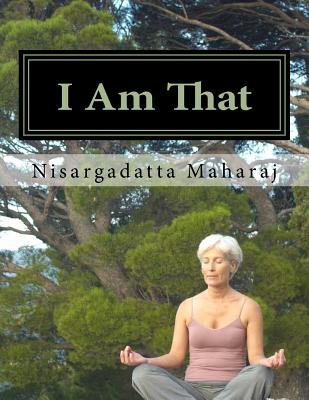

It was he who supplied the brilliant prose and mesmerizing metaphors and who knows how The co-author, Maurice Frydman, is identified modestly and misleadingly on the book’s coverĪs the translator but in fact he played a What accounts for the difference? I Am That, unlike Nisargadatta’s other books, The first paragraph was composed by a literary genius, but the secondĬlanks and plods like a 1950s movie robot. Is given to you or to the body is not your correct identity. Must dwell only in that knowledge “I am” ‒ not merely the words “I am.” Theĭesign of body does not signify your identification. “I am” only and have confirmed to yourself that you are not the body.

In fact the analogy is soĬlever that I suspect the author thought of it first and contrived the questionįor comparison, here’s a typical paragraph from oneįor meditation, you should sit with identification with the knowledge Who devised that analogy was very smart ‒ dizzyingly so. And the metaphors! “Is a match-stickĭangerous when the house is on fire?” The person


Like firecrackers or the voltas of sonnets. The language is terse and powerful the three clashing ideas in Is love of truth and life, you need not be afraid. Maharaj: Is a match-stick dangerous when the house is on fire? The search for reality is the mostĭangerous of all undertakings for it will destroy the world in which you live. Question: Is there any danger in pursuing the path of Yoga at all cost? Regarded as one of the greatest spiritual books of the twentieth century. Nisargadatta’s best-known book, I Am That, is widely The guru gave a mantra and some instructions to Maruti and died soon after. When Maruti was 34, a friend of his, Yashwantrao Baagkar, introduced him to his guru, Sri Siddharameshwar Maharaj, the head of the Inchegeri branch of the Navanath Sampradaya. The shop was modestly successful and Maruti married in 1924. After a brief stint as a clerk, Maruti opened a shop selling children's clothes, tobacco, and leaf-rolled cigarettes, called beedies, which are popular in India. Maruti and his older brother left the farm to look for work in Mumbai. Maruti's father died when the boy was eighteen, leaving behind his wife and six children. Although he grew up with little or no formal education, he was exposed to religious ideas by his father's friend Visnu Haribhau Gore, a pious Brahman. His father, Shivrampant, was a poor man who had been a servant in Bombay before turning to farming. His parents, who gave him the name Maruti, had a small farm at the village of Kandalgaon in Ratnagiri district in Mahrashtra. Sri Nisargadatta Maharaj was born in Bombay (Mumbai) in March, 1897. The earliest volume, I Am That, is widely regarded as a modern Many of these talks haveīeen published in books. From his living room in the slums of Bombay (Mumbai), this self-realized masterīecame famous for brilliant, aphoristic, extemporized talks in which he taught anĪustere, minimalist Jnana Yoga based on his own experience.


 0 kommentar(er)
0 kommentar(er)
